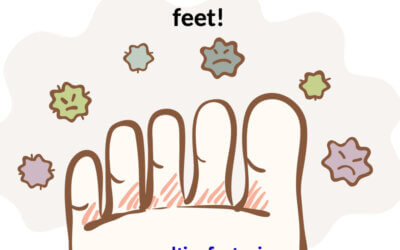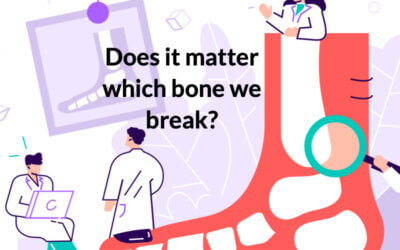Regular Articles
Guide to Contents
I have created a contents page to provide a guide. You can also use the search tool as well.
Smelly feet and the home truth
Poor hygiene adds to the build-up of skin squares offering greater bacterial opportunity. However, increased sweating requires increased temperature, exercise and stress affected by medical drugs and chemicals as in foods. Increased sweating may require medical intervention. One condition that is less common is pitted keratolysis; lysis means breaking down.
A career in Podiatric Medicine
Most podiatrists are only too happy to speak to school leavers and students about the profession of podiatry. Contact the practice and ask if you can attend a clinic
Podiatry as a career choice?
Like a flying carpet from the Arabian Nights of old, I was transformed along a landscape that threw up new opportunities; it was an unchartered journey, unlike today. Like many friends and colleagues, I did not leave school knowing about podiatry. Our career’s office at school failed to mention this, and I was heading for a failed destiny. By chance, I was redirected as many have been.
Avoiding Death by PowerPoint
Well, it is simple. Good speakers feel that PowerPoint makes people lazy, leading to a lack of being prepared. I thought it was a good topic as conference season is starting to warm up for some. Preparation is everything and of course, your talk looks better for those slides. I am a strong proponent of PowerPoint, but I have to say it is poorly used more than it is used well. In preparing this short article I have adopted the term Death by PowerPoint because it really can kill what could be a good talk. A few tips might not go amiss.
Foot cramp is there a cause?
Salt is not just sodium chloride but calcium, potassium, magnesium. These chemicals are also known as electrolytes which are important for nerve conduction and health muscle function. One myth cramp was to eat a banana because this had potassium, a significant body salt. Athletes had their blood levels measured based on their loss of water in sweat and, hence, salt loss. The findings showed little difference between those who suffered cramp and those that don’t.
What is a foot orthosis?
A podiatric consultation is wise for medical foot problems (diabetes, rheumatoid, psoriatic arthritis, compound arch pain, or deformity). High-performance athletes are best consulting a podiatrist with a sports interest as the market is broad and confusing for laypeople.
Urine Holds the Secrets of Health
In the past, physicians would hold up a sample of urine to the light and declare all manner of diagnoses. As a podiatrist in training, colour became a prodigious indicator of so many aspects of medical assessment – the colour of the lips for oxygen exchange, the skin and blemishes for cancer, the colour of the nail bed for heart and lung as well as kidney disease. In every case, subtle colour changes might have played a part from the yellowing features created by jaundice and hence a sign of liver malfunction to the loss of pigment in black skin – vitiligo. When it came to body waste, it was easy to assume this had nothing to do with the podiatrist…
Does it matter which foot bone you break?
When my wife broke a bone in her foot back in October 2021, no one was more surprised than me. During my career, I have been interested in two facts. How people walk on their feet for so long without knowing they have broken a bone. Secondly, the methods we use to make such an assessment can fail, or the diagnosis can be missed. I wanted to introduces broken bones into the discussion about foot health as part of my ongoing pain series. Officially we all know breaks as fractures. Fractures, by dictionary definition (Little Oxford dictionary, 2002), are cracks or breaks which serves my purpose well. A quick check on Wiki and the definition has not changed but our views have.
Fitness centres make health better
Fitness centres are often called gyms, but are they just places to enhance our bodies or can they contribute to our health and wellbeing? I talked to Daley Denning, manager of the LED centre at Seaton, to find out more about his service, career, and training.









